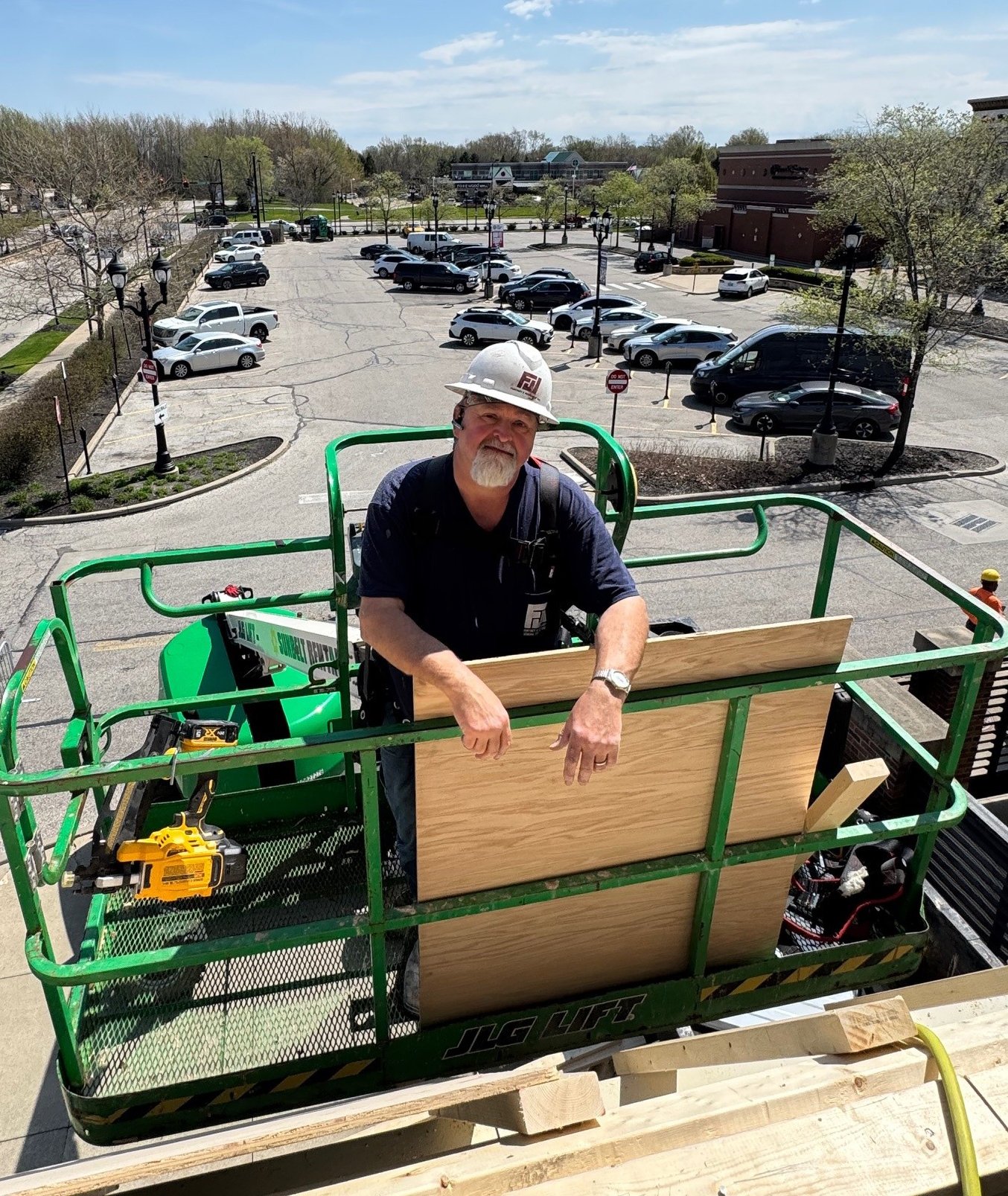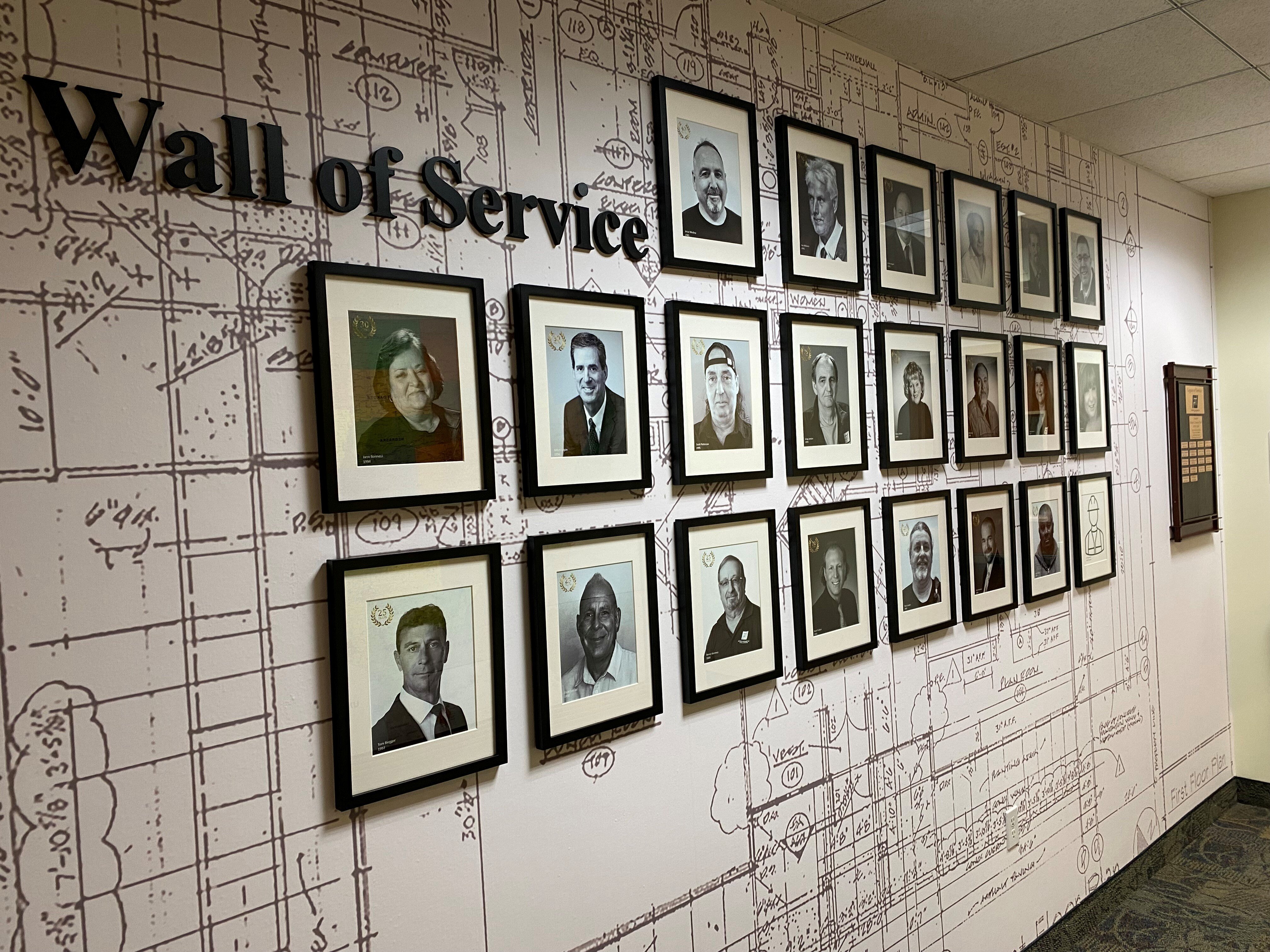For leading retail and restaurant chains, growth is not just a goal—it’s a mandate. When retail industry leaders like CVS, Arby’s, Firestone, McDonald’s, and T-Mobile decide to expand or refresh their footprint, they need a partner that can execute their vision with
precision and reliability. For more than 25 years, our team has been that trusted partner, providing expert rollout construction services that turn ambitious national plans into local realities. We’ve also been fortunate to work with construction managers CBRE and JLL to execute their multi-site renovation and rebranding rollouts.
At the heart of our rollout program is a unique team of dedicated Road Warriors.
The evenings are longer this time of year and it’s great to see so many people out enjoying the weather. These moments — at events, receptions, and backyard barbecues — often lead to meeting new people. And inevitably, someone asks the classic question:
“So, what do you do?”
I genuinely love that question.
It gives me a chance to talk about Fortney & Weygandt, Inc. — a company with a rich history and a national footprint. I share how we started as a “mall rat” contractor, traveling across the country to support retailers as they expanded city by city. Over time, our work evolved — from retail to hotels, senior living, multifamily housing, and commercial construction.
I talk about our people, our culture, our charitable work, and the projects we're proud to build.
But lately, my answer has started to change.
There’s so much more to talk about now.
Yes, we still do all of that — and more.
Every issue of our newsletter showcases a snapshot of projects we’re working on across the country, segmented by market. But those snapshots only tell part of the story.
For instance, our retail work has grown far beyond mall tenant fit-outs. We now build big box stores like Nordstrom Rack and Academy Sports, as well as full shell buildings that house national brands that we've worked with for decades. The definition of retail continues to evolve, and we’re right there with it — building fitness facilities like Pure Barre, F45, and Planet Fitness into retail centers. We're also completing nationwide rollouts for brands like CVS, including remodels and ground-up builds. The variety is incredible.
And it’s not just retail anymore.
We’re seeing a surge in veterinary clinics and urgent care centers taking over traditional retail spaces. We’ve expanded into medical office buildings, including boutique facilities like Good Nature Therapy Services. As healthcare becomes more specialized, we expect to see even more opportunities in this area.
In the related space of senior living, we’ve been building across the full continuum of care — independent living, assisted living, and memory care — either as standalone projects or as part of larger planned communities. Consolidation in this sector is driving even more work through remodels and additions for new and evolving brands.
Our hotel portfolio is also growing rapidly. We continue to be trusted by clients to deliver ground-up hotels like Fairfield Inn & Suites, Hampton Inn, Extended Stay America, WoodSpring Suites, and more. With projects underway in three states and a track record in nine, the momentum is strong.
Commercial work is also on the rise — from office buildouts for financial and insurance companies to cold-storage facilities, warehouses, and even a first for us: a cheese processing facility.
Then, of course, someone at the barbecue offers me a burger and asks:
“Do you want cheese on that?”
It reminds me — I haven’t even mentioned our restaurant work!
We’ve built everything from fast food chains to upscale dining. Brands like Arby’s, Taco Bell, First Watch, Darden, Brinker, and others rely on us for remodels, new builds, and multi-site rollouts. It’s a segment we know well — and one that always makes me a little hungry.
So yes, I’ll take cheese on that burger and ask you the same. What do you do? And how can we help?
We find ourselves navigating a continuingly challenging economic landscape— interest rates and the labor shortages aside, the volatility of global tariffs have introduced new complexities into our industry. Understandably, this environment can create hesitation when considering major capital expenditures or long-term development plans.
While uncertainty can be daunting, it is not unfamiliar.
History has shown us that economic cycles—like seasons—are inevitable. Periods of difficulty are often the price of long-term growth.
So what does that mean for your construction project today?
It means there are proactive, strategic steps we can take together to ensure your vision remains not only viable but resilient:
- Preconstruction Planning is More Important Than Ever
We encourage early collaboration. Locking in scope, refining budgets, and front-loading procurement decisions reduces the impact of material cost fluctuations and availability constraints. Investing more time up front saves exponentially more time—and cost—down the line.
- Lean Construction and Value Engineering
Today’s environment demands agility and discipline. We’re helping clients evaluate project elements for function, efficiency, and cost-effectiveness without compromising quality. This is not about cutting corners; it’s about finding smarter paths to the same goal.
- Leveraging Relationships and Buying Power
Our longstanding partnerships with subcontractors and suppliers gives us access to more competitive pricing and priority scheduling, especially critical as labor shortages and tariffs strain timelines.
- Scenario Planning and Contingency Management
Building buffers into both schedule and budget allows us to pivot when conditions change. Risk doesn’t disappear, but it becomes manageable when you account for it with intention. That’s why we help build contingency into every plan – cost, time and scope.
And most importantly:
- Don’t Lose Sight of the Long Game
In his recent book Same as Ever (whose title I borrowed and inspired this topic), Morgan Housel analyzes many moments like this. Market declines, policy shifts, labor challenges – these have all happened before. And what endures is not the storm, but how we respond to it. We believe that this uncertain time is not a reason to stop building, but to build smarter. While the inputs may shift, the fundamental truths remain. Strong partnerships, smart planning and long-term vision are the pillars of every successful project.
We are here not just as builders, but as partners. Our role is to help you see the whole playing field, mitigate risk, and stay on course toward your long-term objectives. The road ahead may not be straight—but it is navigable with foresight, discipline, and the right team. Let’s keep building – deliberately, confidently, and with purpose.
The promise and peril of AI has been a hot topic the past year. Every conference I attend or magazine I receive is focused on AI. They are promoting the cost savings and transformational effects it will have on our business. We can have bots perform administrative tasks, analyze data and do so much more. The robot construction worker still seems to be off in the distant future. However, that distant future is getting closer and closer.
Fortunately, a majority of our work requires people. In my lifetime, I don’t foresee AI replicating the work our excellent carpenters perform in the field. I don’t see it offering the perspective of 30 years of project experience our Director of Field Operations provides – and his motivating delivery. Our project managers can encompass several perspectives when analyzing a project status to deliver the best possible outcome. I have yet to see AI offer an equal project analysis.
Perhaps I am expecting too much from the AI promises promoted in these speeches and publications. However, if there is a way to drive client value then I’m all in. When it entered the mainstream, AI seemed to be geared towards large corporations with the complexity and volume of projects that surpass ours. Increasingly though, there have been tools generated to assist us in delivering tangible benefits, ranging from faster project completion to enhanced quality and cost savings.
In construction, where every day of delay can mean thousands in lost revenue, timely project completion is critical. AI-driven scheduling tools analyze vast datasets—including weather forecasts, supply chain logistics, and labor availability—to predict and mitigate potential delays. By streamlining workflows and optimizing project sequencing, AI helps ensure that construction stays on or ahead of schedule —all translating into a quicker return on investment.
We are exploring ways to use AI-powered cost estimation tools to analyze historical data, current market trends, and supplier pricing to create highly accurate and transparent budgets. Predictive analytics can even account for potential cost fluctuations, allowing for proactive planning.
Some AI tools are already embedded in the project management software we currently utilize. This software utilizes AI to streamline communication by offering real-time project dashboards. Clients can log in to view progress updates, budget tracking, and timelines—all from their phone or computer. AI algorithms can also send automatic alerts for key milestones or potential issues, keeping everyone on the same page.
We see the greatest value in AI in the streamlining of basic administrative function, allowing our employees to focus on more complex and strategic initiatives. One of the primary applications of AI in administration is data management. AI-powered systems can quickly process, sort, and organize large volumes of data, ensuring accuracy and consistency. For example, tasks such as data entry, document filing, and record-keeping can be automated. By automating repetitive tasks and enhancing decision-making processes, AI not only accelerates administrative functions but also contributes to increased productivity, cost savings, and improved organizational efficiency.
AI tools offer immense potential for efficiency, cost savings, and risk mitigation in the construction industry. However, their adoption comes with notable challenges and risks. While AI enhances productivity, it may reduce the need for certain roles, leading to workforce resistance. Upskilling employees to work alongside AI is crucial to avoid operational disruptions. Additionally, AI can streamline project planning, risk assessment, and supply chain logistics, but over-reliance without human oversight can be dangerous. Construction projects involve unpredictable elements—weather, labor issues, regulatory changes—that AI may not fully account for. So far human oversight is still required to maximize the effectiveness of AI tools. Fundamentally, if the tools are not delivering positive client outcomes, they are not worth using.
Ultimately, for clients the integration of AI into the construction process isn’t just about cutting-edge technology—it’s about results. Projects finish faster, stay on budget, meet higher quality standards, and offer greater transparency throughout the process. In the competitive industries in which we build, these advantages can make a significant difference in a business’s bottom line. It’s a game-changer for companies that want to offer clients more efficient, transparent, and high-quality projects.
We are in the early stages of implementing AI tools to assist our teams in gathering data, brainstorming, or presenting information. However, like any tool it much be checked for accuracy and reliability. It must also be used for the right task. For us, it is an evolving process. For clients, the goal is less stress, fewer surprises, and ultimately, a smoother path to a successful construction project.
It is getting to be that time of year where we focus on the relationships in our life. We spend more time with friends. Family gathers around communal tables and give thanks. It is also a valuable time of year to recognize the other family members of your life – the ones you spend the most time with. The people you work with.
Fortney & Weygandt, Inc. has promoted four people as they build the next generation of the company.
In construction, where timelines are tight, budgets are stringent, and stakes are high, customer service often emerges as a critical differentiator. The construction industry, traditionally perceived as being driven by technical expertise and project management prowess, increasingly recognizes the profound impact of customer service on project outcomes and long-term business success.
Summer is right around the corner and with its arrival we look forward to warmer weather, time with friends and family, and the surge in construction activities. Beyond the orange cones that pop up across the landscape like dandelions in a field, there is also a flurry of site development and build-outs racing toward a quick and satisfactory completion. This activity creates a critical time to keep projects on schedule amidst heightened demand and potential challenges.
Here are four crucial steps to navigate the busy summer construction season while staying on track with project timelines.
As one-year ends and another begins, it is a natural time for reflection. It also coincides with the season of giving. Looking back over the past year, I am proud of what our employees have done of their own accord and as part of the company to give back to the communities we serve.
In a world where the only constant is change, we are not immune to the financial shifts that influence our clients bottom line. One of the most significant challenges we face in recent times is the rising interest rates on commercial construction projects and remodels. The era of cheap money may be gone, but we built our business during a high interest rate environment in previous decades. We know these rates can be a challenge, but we’ve been here before and we can thrive during these changes.




















